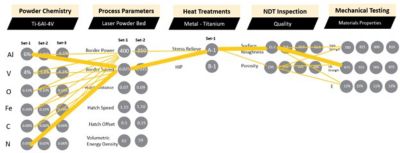-
United States -
United Kingdom -
India -
France -
Deutschland -
Italia -
日本 -
대한민국 -
中国 -
台灣
-
Ansys si impegna a fare in modo che gli studenti di oggi abbiano successo, fornendogli il software gratuito di simulazione ingegneristica.
-
Ansys si impegna a fare in modo che gli studenti di oggi abbiano successo, fornendogli il software gratuito di simulazione ingegneristica.
-
Ansys si impegna a fare in modo che gli studenti di oggi abbiano successo, fornendogli il software gratuito di simulazione ingegneristica.
-
Contattaci -
Opportunità di lavoro -
Studenti e Accademici -
Per Stati Uniti e Canada
+1 844.462.6797

Engineers in all industries use simulation to evaluate the quality of their new designs. Before such analysis tools were available, engineers had to build physical prototypes and test their designs in the real world. With simulation tools, the need for physical testing is reduced by providing a quicker, easier way to analyze new designs. Innovation depends on the ability to try out new ideas. The more designs that an engineer can consider, the faster that he or she can find something that works better than the current state of the art.
An ideal analysis tool takes the definition of a product, along with its operating conditions, and instantly delivers an exact prediction of performance for the new design. Although this is a dream, simulation tools are evolving in this direction. Over the years, simulation has become easier to set up, faster to run, and more accurate.
In recent years, mathematical techniques known as artificial intelligence (AI) have helped us make leaps and bounds toward these ideal analysis methods. If we look at Ansys tools, some of our most advanced capabilities are powered by AI. Wherever possible, we have isolated these in dedicated AI+ modules. This allows Ansys to provide AI capabilities to users no matter which license packages they have. Ansys also is able to turn off AI capabilities in products if users are not yet comfortable with these advanced features. And very simply, AI+ options allow Ansys to highlight the latest and greatest AI-powered capabilities.
To date, Ansys has seven such modules available:
- CFD AI+
- SynMatrix AI+
- optiSLang AI+
- Structures AI+
- Granta MI AI+
- Electronics AI+
- Missions AI+

The Ansys CFD AI+ module enables you to predict fluid behavior with steady state simulations.
CFD AI+
The Ansys CFD AI+ module enables you to predict fluid behavior with steady state simulations only previously possible with more costly transient simulations. By fine-tuning the Ansys Fluent turbulence model on a reference result from transient simulations, you then can run a suite of less expensive steady state simulations with increased fidelity but with far fewer computational resources.
SynMatrix AI+
The SynMatrix AI+ module brings AI techniques into the design of radio frequency (RF) filters, helping engineers find the optimal configuration for new RF filters.
Granta MI AI+
Using Granta MI AI+ technology, materials engineers can gain insights into factors affecting material properties by better understanding the process-property relationship. This enables the optimization of existing material and manufacturing processing parameters and aids in defining new materials.

An example showing how the SynMatrix AI+ module incorporates AI in the design of radio frequency (RF) filters.
Missions AI+
An AI-based tool is available in Ansys Orbit Determination Tool Kit (ODTK) orbit simulation software to automatically evaluate the quality of resulting orbits. This quality assessment tool is offered as part of Ansys Digital Mission Engineering (DME) software’s Missions AI+ module. Combining tuned models with AI algorithms allows users to confidently assess the quality of their resulting ODTK orbit solutions.
optiSLang AI+
The optiSLang AI+ module allows Ansys users to create surrogate models, which provide a way to explore possible designs even faster than with numerical simulation tools. Some techniques even give AI the ability to search through potential designs and provide optimal choices to users. Human operators simply specify desired performance characteristics, and the AI-powered algorithms perform the tedious task of considering all the possible product configurations, identifying and presenting only the best options.

Ansys Granta MI AI+ technology enables materials engineers to gain insights into the material process-property relationship.
Structures AI+ and Electronics AI+
Both the Structures AI+ and Electronics AI+ modules contain tools to predict the amount of computing power that is required to run simulations for Ansys Mechanical structural simulation software and Ansys SIwave printed circuit board (PCB) and package electromagnetics simulation software products. Machine learning predicts how long a simulation will take (given the available resources), how much memory it will need, and what happens if a user throws more computing power at it. This capability will be even more important as Ansys continues to enable customers to use the virtually unlimited compute capacity in the cloud. Ansys users will need to know how much it will cost them to burst simulation into the cloud.
These AI+ capabilities are a sampling of what’s to come. Ansys recently brainstormed on all product lines. We came up with about 150 ideas of how to use AI to further enhance Ansys products. Now we are busy identifying top-priority items and determining how to implement these ideas. The future of AI at Ansys is bright.
Just for you. We have some additional resources you may enjoy.
“If we look at Ansys tools, some of our most advanced capabilities are powered by AI. Wherever possible, we have isolated these in dedicated AI+ modules. This allows Ansys to provide AI capabilities to users no matter which license packages they have.”
The Advantage Blog
The Ansys Advantage blog, featuring contributions from Ansys and other technology experts, keeps you updated on how Ansys simulation is powering innovation that drives human advancement.













